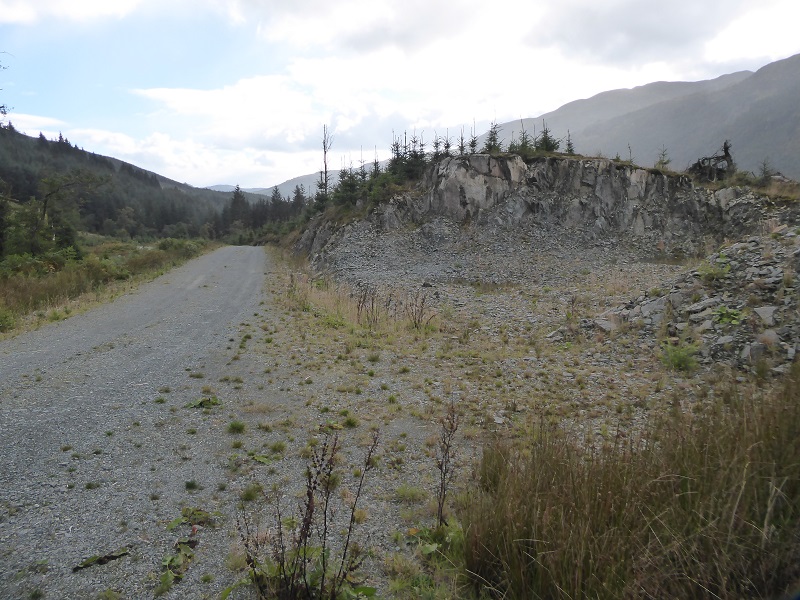
Background
The Planning Bill, which is about to be considered again by the Scottish Parliament, originated as a response to developers who claimed that the Planning System was an impediment to “economic development”. The real explanation for why developments can take a long time to materialise lies in most developments being driven first and foremost by profits. Developers hoard land and only submit or activate planning consents when “market conditions” are right – which explains why much public land sold off in the last few years in England supposedly to address the housing crisis still remains undeveloped. Developers also have very little regard to the interests of other stakeholders – which is why Flamingo Land is in such trouble at Balloch – and this results in the Planning Process becoming a field for conflict.
The first draft of the Planning Bill was in effect a power grab, an attempt by developers and the people who represent their interests to shift the system, which is already rotten, even more in their favour. To our politicians credit, many have not accepted this and are also using the opportunity to address long-standing deficiencies in the planning system, such as the way its failed to protect Scotland’s beautiful landscapes. The Planning Bill has received more amendments than any other in the history of the Scottish Parliament. As a consequence its likely to become a very unwieldy Act. It would, however, take real political courage to start again with a Bill which was designed to meet the needs of Scotland as a whole and put people and places first.
The effect of Andy Wightmans proposals on tracks (private ways or roads)
The impact of tracks on the landscape has been a constant theme of Parkswatch and its very welcome therefore that Andy Wightman, the Green MSP, has introduced a series of amendments to the Bill which would effectively bring tracks in sensitive areas into the Planning System:

Forestry and agricultural tracks are currently permitted developments, which means they don’t require full planning consent but instead come under the Prior Notification system. This has been widely abused, most notably by sporting estates claiming that new tracks over grouse moors and up into the hills are for agricultural purposes, and gives Planning Authorities few powers to remedy the abuses that do take place or to reject inappropriate forestry or agricultural tracks. Andy Wightman’s earlier attempts to amend the Bill were focussed on preventing Sporting Estates from abusing the system (first amendment above).
It extremely welcome therefore that Andy Wightman and the Greens are is now trying to end permitted development status for ALL agricultural and forestry tracks in protected areas from National Parks to battlefields and to bring these fully into the Planning System. By itself, of course, this won’t address the impact that inappropriate and poorly designed tracks have on the landscape. Our Planning Authorities need to be prepared to REJECT inappropriate roads in the countryside, something they are failing to do at present. Examples from National Parks include the Cairngorms National Park Authority’s consent earlier this year for the Balavil Estate to construct a new road over the Monadhliath into a Wild Land Area (see here)or the way that the Loch Lomond and Trossachs National Park Authority has retrospectively granted consent to what were originally intended to be temporary construction tracks, whether for hydro schemes (see here) or more recently power line upgrades (to be covered in future). Our Planning Authorities also need to tighten up on the standards they apply to the construction of new tracks – many are far to wide and follow inappropriate lines – and to devote the resources necessary to see these are applied, including taking enforcement action where necessary.
While these issues are central to preventing any further destruction of Scotland’s landscape, until and unless tracks come fully within the Planning System, Planning Authorities will get bogged down in endless arguments about whether a track really needs full permission or not rather than being able to address the landscape and other ecological impacts of the track. Matters relating to the location and design of tracks can also be addressed through mechanisms other than legislation, such as policy guidance and Local Development Plans. For example, I would like to see Scottish Government Guidance making a policy presumption against new roads in upland areas, say over 600m and then Planning Authorities designating such areas as “track fee” in their Local Development Plans.
If I have one small reservation about Andy Wightman’s amendments (see here), its about the meaning of the word “alteration”. The intention, which I fully support, is to prevent landowners “upgrading” existing tracks to create something very different. However, the word “alternation” does not appear to be defined and there has, I believe, to be some allowance for responsible landowners to maintain and carry out minor alterations to tracks, for example constructing new culverts, without have to seek full planning permission each time. Its because of that that I have previously suggested that a revised version of the Prior Notification system could have its place (see here). Landowners would be required to notifiy the Planning Authority about ALL planned maintenance and upgrades (“alterations”) but where they had an agreed specification for such works in place (maximim width of track, restoration of any disturbed ground etc) works would be permitted on this basis. This issue could probably be addressed by Scottish Government Guidance if Andy Wightman’s amendments are passed.
What you can do to help get the law on tracks changed
Andy Wightman is asking people to lobby MSPs to support these amendments and I would urge people to do so. The following is the text of an email Andy sent to supporters of the Greens under the heading “Protecting Scotland’s Landscape” which has been passed on to Parkswatch by a reader:
“The Planning Bill will be debated at its third and final stage from 18 – 20 June 2019.
I have lodged amendments to ensure that hunting tracks are subject to full planning control but I need you to write to your MSPs to ask them to back these proposals.
Take action
Hunting estates dominate Scotland’s uplands. To make hunting easier, tracks are bulldozed throughout the hills.
Incredibly, these tracks usually don’t require full planning permission. If a landowner wants to bulldoze one, they can do so with relative ease. Strictly speaking hunting tracks need full planning consent but this is easily avoided by claiming that the tracks are for agriculture. That’s why they’ve proliferated in recent years, scarring our hills.
My amendments would mean that all hunting tracks on land used for hunting require planning permission as well as making this a requirement in Scotland’s National Parks, across Sites of Special Scientific Interest, on designated historic battlefields and in National Scenic Areas.
At Stage 2, the SNP and the Tories voted against similar amendments. This is the last chance for probably a decade to ensure that these tracks are properly regulated.
Please take a moment to email your MSPs and ask them to support Amendments 14 to 18 to the Planning Bill in the name of Andy Wightman MSP.
You might want to make the following key points: Across Scotland, our uplands are being damaged by landowners who bulldoze and scar the land to create tracks for deer stalking and grouse shooting.
- These amendments would mean that landowners have to seek planning permission to construct such tracks.
- At the very minimum, there should be full planning controls in Scotland’s National Parks.
- Amendment 18 on National Scenic Areas merely puts into law a requirement contained in a Ministerial Direction issued in 1987.”
Further suggestions for lobbying
The Green’s website shows that 1,844 people had at the time of writing lobbied their MSPs through the online system they have set up. That is pretty good but more are needed and more who do so independently the better.
While the Conservative Party and SNP MSPs all voted against Andy Wightman’s original amendments, I do not believe that reflects the view of their supporters and members. Land reform and the beauty of Scotland are central to the concerns of many within the broad independence movement, while the Tories in Scotland have supported additional protection for the landscape. They have, for example, been strong supporters of a new National Park in Drumfries and Galloway (support for which has developed round local concerns about the impact of industrial forestry and powerlines on the landscape).
When lobbying on landscape, its worth bearing in mind that a photo is worth more than a hundred words – except the promise of a vote of course! If you have a photo of a track that has not been through the planning system please send this to your MSPs and ask them if they agree the track has an unacceptable impact on the landscape. If they do, ask them to bring such tracks fully into the planning system.
You can check if a track has had planning consent by going to the Planning Planning Portal of the Planning Authority concerned and doing a map search:

Zoom into the area you want to search until you get to the level where the contours disappear and enable the filter. Red lines appear denoting planning applications and you can click on them for details. In this case I wanted to check whether any retrospective planning application has been submitted to the unlawful track constructed at the head of Glen Prosen, in Angus, in the Cairngorms National Park which I reported almost two years ago (see here for photos)
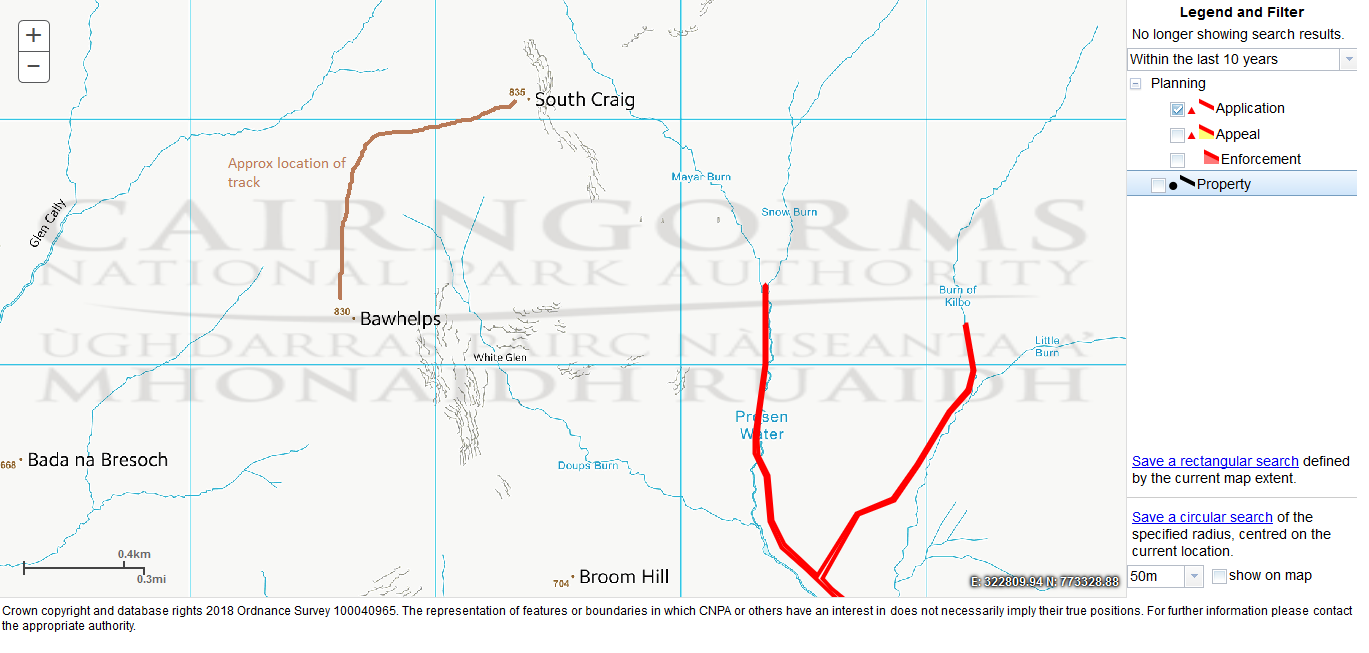
The map shows that there has been no planning application for the road I saw in July 2017. The red lines below and to the left represent the Glen Prosen Hydro scheme which I visited earlier this year. In-between them is a new “upgraded” grouse moor track (see here) – the absence of that too shows there has been no planning application.
Besides any photos you may have, there is lots of material on the web including reports produced by the LINK hill tracks group (see here) which you could use. You are also welcome to use the parkswatch hill tracks tag to find examples.
There is lots of evidence for how sporting estates have claimed that new tracks are for agricultural purposes to avoid having to get full planning consent. At the end of last year I asked the Cairngorms National Park Authority for a list of all prior notifications for hill tracks they had processed since this procedure was introduced in December 2018. While the Planning Portal software is not set up to show this, they kindly provided me with a list of 88 Prior Notifications (see here).
A large batch were submitted for the Invercauld estate:
| 2016/0174/NOT | APP/2016/1397 | Land To West Of Milton Burn Allargue Estate Corgarff Strathdon Aberdeenshire |
Prior approval for improvements to access track relating to (APP/2015/1975) | 19/05/2016 | 09/06/2016 |
| 2016/0175/NOT | APP/2016/1462 | Nd Adjacent To Corndavan Lodge Invercauld Estate Braemar |
Formation of Agricultural Track | 25/05/2016 | 13/06/2016 |
| 2016/0176/NOT | APP/2016/1463 | Land Adjacnet To Corndavan Lodge Invercauld Estate Braemar |
Formation of Agricultural Track | 25/05/2016 | 13/06/2016 |
| 2016/0177/NOT | APP/2016/1465 | LAnd Adjacent To Corndavon Lodge Invercauld Estate Braemar |
Formation of an agricultural track | 26/05/2016 | 13/06/2016 |
| 2016/0178/NOT | APP/2016/1468 | Land At Corndavon Lodge Invercauld Estate Braemar |
Formation of an agricultural track | 26/05/2016 | 13/06/2016 |
| 2016/0179/NOT | APP/2016/1474 | Land At Corndavon Lodge Invercauld Estate Braemar |
Formation of an agricultural track | 26/05/2016 | 13/06/2016 |
| 2016/0180/NOT | APP/2016/1476 | Area Known As Tom Odhar Invercauld Estate Braemar |
Formation of an agricultural track | 26/05/2016 | 13/06/2016 |
| 2016/0181/NOT | APP/2016/1479 | Land North Of Tullochmacarrick Invercauld Estate Braemar |
Fomration of an agricultural track | 26/05/2016 | 13/06/2016 |
| 2016/0182/NOT | APP/2016/1480 | Land To North Of Shenval Glen Cairn Ballater AB35 5UR |
Formation of an agricultural track | 26/05/2016 | 13/06/2016 |
| 2016/0183/NOT | APP/2016/1481 | Land To South Of Torbeg Glen Gairn Ballater AB35 5XL |
Formation of an agricultural track | ||
| 2016/0184/NOT | APP/2016/1483 | Land To The East Of Braenaloin GLen Gairn Ballater AB35 5UQ |
Formation of an agricultural track | 26/05/2016 | 13/06/2016 |
| 2016/0185/NOT | APP/2016/1484 | Land At Gaellaig Hill Invercauld Estate Braemar |
Formation of an agricultural track | 26/05/2016 | 13/06/2016 |
| 2016/0187/NOT | APP/2016/1467 | Land At Corndavan Lodge Invercauld Estate Braemar |
Formation of an Agricultural Track | 25/05/2016 | 13/06/2016 |
| 2016/0206/NOT | APP/2016/1464 | Land At Geallaig Hill Invercauld Estate Braemar |
Formation of Agricutural Track | 02/06/2016 | 13/06/2016 |
| 2016/0215/NOT | APP/2016/1639 | PN Red No Gairn 02 Upper Tullochmacarrick Invercauld Estate OS Map Ref NJ 271 029 |
Repairs to Agricultural Track | 08/06/2016 | 13/06/2016 |
And here are some of the photos that were provided for Prior Notification 1465 “adjacent to” Corndavon Lodge:
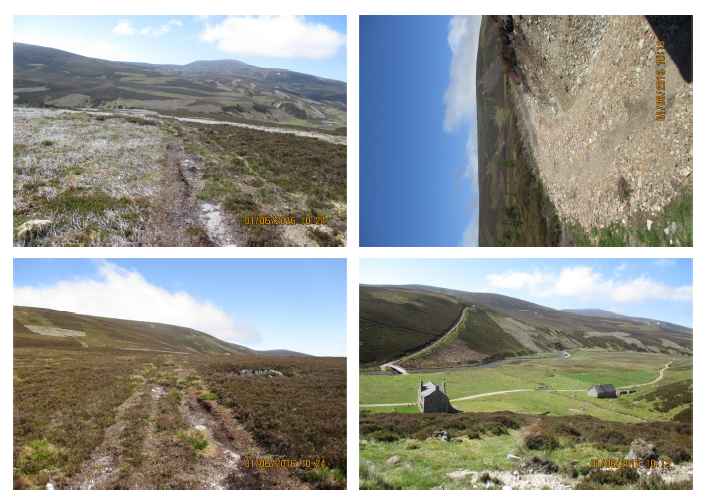
The report of the Prior Notification by the Officer (see here) did not question the claim by Invercauld Estate that these tracks were for agricultural purposes, despite the evidence in the photos. Or despite SNH, in their email response (see here), saying this about this and other tracks:
“The applicant has submitted supporting evidence which provides some justification that these tracks may be required for agricultural purposes, including: agricultural holding number, tenant details and livestock numbers. It is noted that a review of the site plans, OS maps and aerial photography also strongly suggests that these are key locations for sporting activities, particularly grouse shooting.
Therefore the Local Authority should be satisfied that the proposed tracks are in fact reasonably required for agriculture.”
This provides clear evidence about how the Prior Notification is being abused by prominent landowners and ineffectively policed by Planning Authorities. Justification in itself for Andy Wightman’s first and original amendment.
I believe too its well worth people highlighting to their MSPs the terrible impact forestry tracks have had on protected areas. New forestry tracks have rarely been used to justify tracks over grouse moors – that would mean the owners allowing some trees to grow. That does not mean, however, they are not an issue. The Forestry Industry has been fiercely resistant to forestry tracks being controlled by Planning Authorities with the former regulator, the Forestry Commission for Scotland, claiming they do this quite adequately using the UK Forest Standard.
As I argued in my recent blog about the LLTNPA draft Trees and Woodland Strategy (see here – several photos of the terrible scars created by poorly designed and constructed forest tracks), this standard is not fit for National Parks or other protected areas. Andy Wightman’s proposed amendments 15-18 are therefore extremely welcome as they would force the Forest Industry to apply for planning permission for new tracks and track upgrades. Here are a some more photos providing evidence of the need for this:
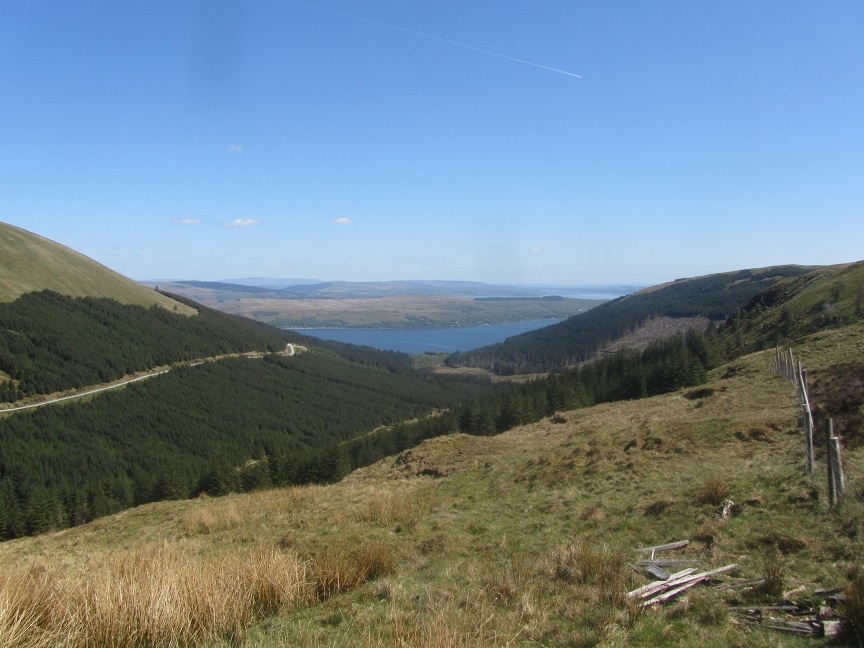
The conifers look bad but the landscape impact of the straight track makes the impact of the plantation even worse
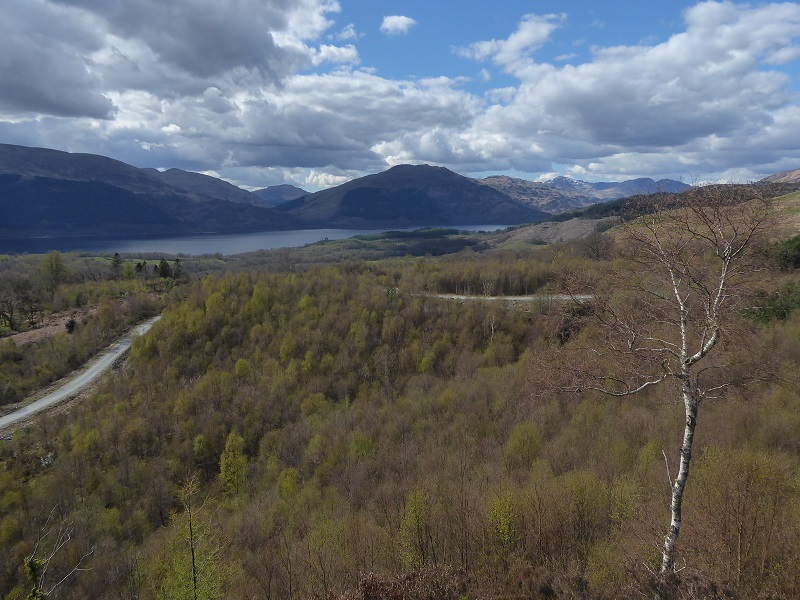
The UK Forest Standard allow for roads 5-7m broad, which is far too great for National Park and other protected areas
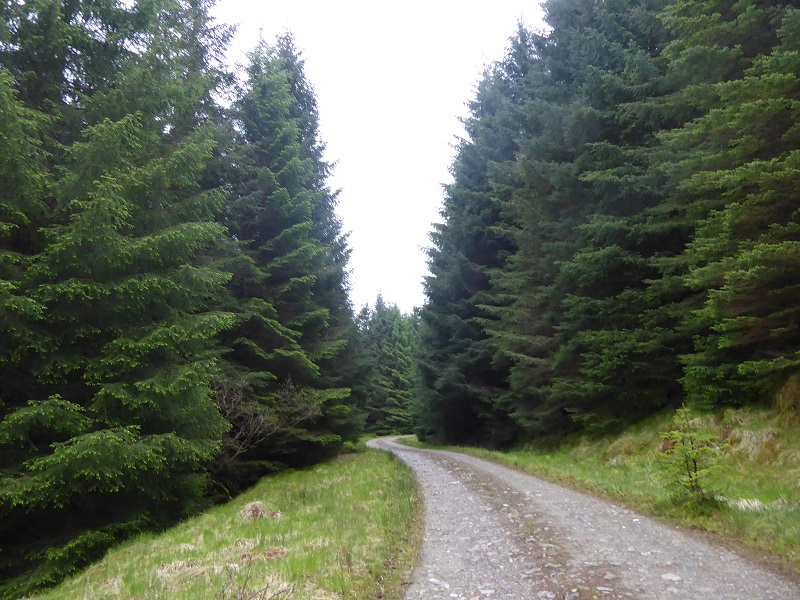
The roads created for planting and maintenance are often not badly done, although broader then necessary (tracks like this rarely exist in the Alps for example), the problem comes when they are “improved” or “made fit” for giant harvesting machines and often end up doubling in size.
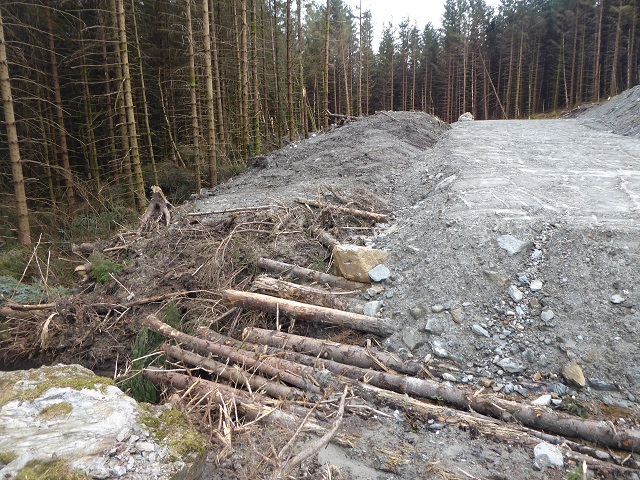
The creation of harvesting roads appears to pay no regard to landscape, wise use of resources, outdoor recreation or protection of watercourses
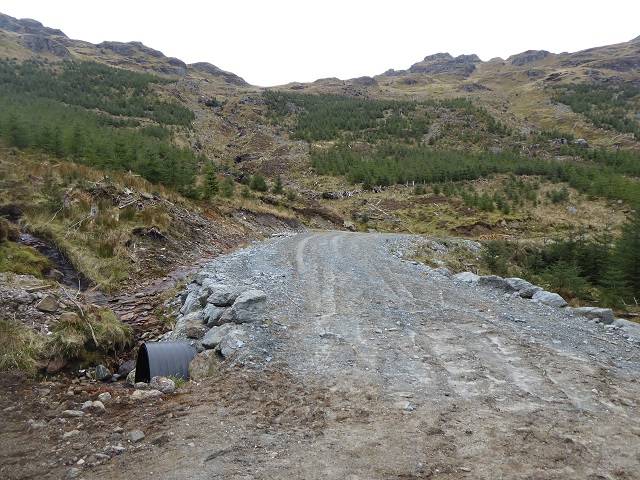
Clearly, Forest and Land Scotland need to be accountable to some external authority unconnected with the forestry industry for the roads they build and the UK Forestry Standard urgently needs to be made fit for Scotland’s protected areas.
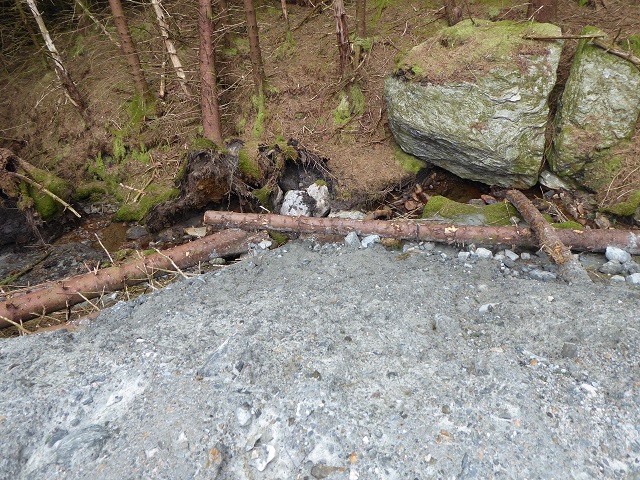
Its not just our Planning Authorities that need to be involved, the Scottish Environment Protection Agency should be monitoring Forest and Land Scotland’s road building too
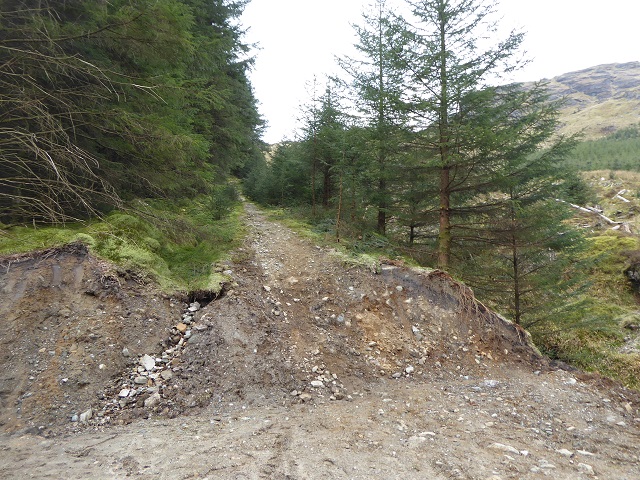
People who care about the landscape in Scotland and walk in it must have thousands of photos of horrible forest roads across Scotland. Please send them to your MSPs, tell them this problem needs addressed and the first step towards this is bringing forest roads in protected areas fully into the planning system.

Any MSP who fails to support Andy Wightman’s amendments deserves to lose their seat at the next election for the Scottish Parliament. The construction of hill roads in the Scottish uplands has been out of control since the 1960s. Tory, Labour, Lib Dem and SNP politicians have all failed to bring in adequate controls when they have been in government, either at Westminster or Holyrood. All of them have been tipping their forelocks and bending to the will of powerful landowners and their chums in the forestry industry. The only way to get rid of this problem once and for all, while bringing Scotland up to the standard of landscape protection enjoyed by other European countries, is to get rid of any MSPs who fail to support these amendments. One of the founding principles of the Scottish Parliament was a commitment to land reform. Twenty years of failure to control hill road construction by all those politicians who have had the power to make the necessary legislative changes shows that their commitment to land reform is wafer thin. They should all be told, any failure to support the Wightman amendments, should be the end of their political careers.